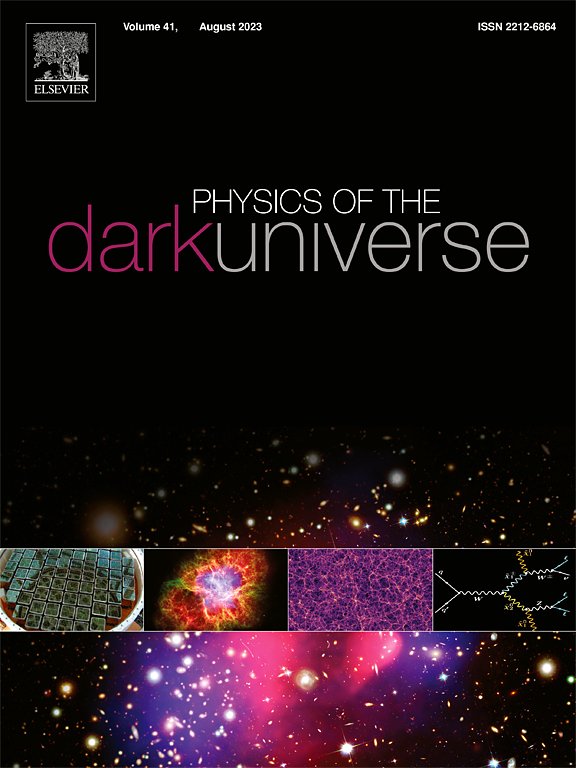f(R,Lm)重力下Gong-Zong参数化的宇宙学模型
IF 6.4
2区 物理与天体物理
Q1 ASTRONOMY & ASTROPHYSICS
引用次数: 0
摘要
利用暗能量状态方程(EoS)参数研究了f(R,Lm)引力下的宇宙膨胀情形。我们将f(R,Lm)引力的具体形式称为f(R,Lm)=R2+Lmα。我们用红移的形式推导了两种不同形式的EoS参数的膨胀率。在第一个模型中,EoS参数随红移呈反比变化,在第二个模型中,EoS参数随红移呈指数形式变化。采用基于χ2最小化技术的贝叶斯方法,确定了宇宙天文钟(CC)和联合天文台(CC+Pantheon)数据集的模型参数中值。基本的宇宙学参数,如减速参数,能量密度和压力的行为进行了彻底的检查。此外,状态查找器诊断的性质和宇宙的当前年龄例证了与后期天文观测的兼容性。本文章由计算机程序翻译,如有差异,请以英文原文为准。
Cosmological model with Gong-Zong parametrization in f(R,Lm) gravity
We present the cosmic expansion scenarios in the gravity studied by using the dark energy equation of state (EoS) parameters. We proceed with the specific form of gravity termed as . We derive the expansion rate in terms of the red-shift for two different forms of EoS parameter. In first model, EoS parameter varies inversely with the redshift and in second model, it involves the exponential form with the redshift. By using the Bayesian methods based on the -minimization technique, the median values of model parameters are determined for the cosmic chronometer(CC) and Joint (CC+Pantheon) data sets. The behavior of fundamental cosmological parameters such as the deceleration parameter, energy density and pressure are thoroughly examined. Additionally, the nature of Statefinder diagnostics and the present age of universe exemplifies the compatibility with the late-time astronomical observations.
求助全文
通过发布文献求助,成功后即可免费获取论文全文。
去求助
来源期刊

Physics of the Dark Universe
ASTRONOMY & ASTROPHYSICS-
CiteScore
9.60
自引率
7.30%
发文量
118
审稿时长
61 days
期刊介绍:
Physics of the Dark Universe is an innovative online-only journal that offers rapid publication of peer-reviewed, original research articles considered of high scientific impact.
The journal is focused on the understanding of Dark Matter, Dark Energy, Early Universe, gravitational waves and neutrinos, covering all theoretical, experimental and phenomenological aspects.
 求助内容:
求助内容: 应助结果提醒方式:
应助结果提醒方式:


